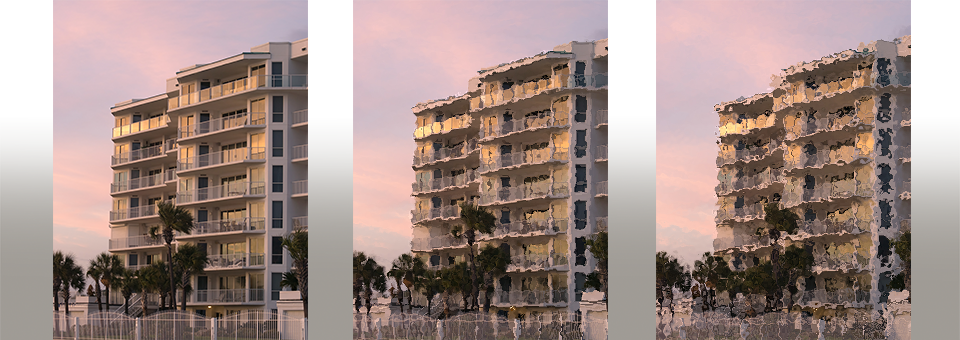
Harleysville Group Insurance v. Heritage Communities, Inc., Op. No. 27698
This was a declaratory judgment action seeking clarification of Harleysville’s indemnification obligations in two similar lawsuits alleging construction defects at condominium complexes in Myrtle Beach.
Those complexes were constructed by Harleysville insureds (collectively “Heritage”). After Heritage completed construction, the purchasers discovered significant construction problems, including building code violations, structural deficiencies, and water-intrusion issues. The respective property owners’ associations filed lawsuits in 2003 seeking compensation for the cost of repair. Additionally, as to one complex, individual owners filed a class action seeking to recover damages for loss of use of their properties.
During the period of construction, from 1997 to 2000, Heritage maintained several liability insurance policies with Harleysville. Heritage was uninsured after the last policy lapsed in 2001, and the strain of the lawsuits caused Heritage to go out of business in 2003.
Harleysville defended Heritage in the lawsuits, subject to a claimed reservation of rights to deny coverage. At trial, Harleysville’s chosen counsel for Heritage conceded liability, leaving only the issue of damages. The juries in these lawsuits awarded the plaintiffs more than ten million dollars against Heritage (via general verdicts), including substantial punitive damages.
Subsequently, Harleysville commenced declaratory judgment actions against Heritage to determine what portion of the verdicts would be covered under the policies. The matter was referred to a Special Referee, who determined that Harleysville’s responsibility for actual damages should be determined on a time-on-the-risk basis. Additionally, the Special Referee rejected Harleysville’s argument that punitive damages were not covered by the policies. The parties filed cross-appeals. On appeal, the South Carolina Supreme Court affirmed (and modified in part) the Special Referee’s decision.
The Court began its opinion with a detailed discussion of its prior cases concerning insurance coverage in the construction context. The Court first noted that it had previously decided that coverage may exist for damage to property other than the faulty workmanship itself, such as progressive water intrusion damaging otherwise non-defective construction components. On the other hand, coverage will generally not exist for the repair or replacement of defective work.1 Later, the Court held that (in cases of progressive injury that cannot be attributable to a specific insurance policy period) an insurer’s pro rata share of damages is a function of the number of years damages progressed and the proportion of those years the insurer provided coverage.2 Having laid out this groundwork, the Court began its analysis of the issues before it.
The Court first held that the trial court correctly concluded that Harleysville failed to reserve its right to contest coverage as to damages for faulty workmanship, which are not covered under the law. Citing Couch, the Court noted that a reservation of rights letter “is a notice given by the insurer that it will defend [the insured in the lawsuit] but reserves all rights it has based on noncoverage under the policy.”3 Such a letter must give fair notice to the insured that the insurer intends to assert defenses to coverage or pursue declaratory judgment. Because an insurer has the right to control litigation, some courts have found that where an insurer defends under a reservation of rights, it must inform the insured of the need for a verdict allocated between covered and noncovered damages. It is also under a duty not to prejudice its insured’s rights by failing to request special interrogatories or a special verdict to clarify coverage of damages.
However, the insurer must place the insured on notice of the grounds upon which it may seek to deny coverage. If it does not do so, the insured is placed at a disadvantage because it cannot properly investigate and prepare its own defense. In such circumstances, “the insured has no reason to act to protect its rights because it is unaware that a conflict of interest exists between itself and the insurer.”4 Thus, if the insurer’s reservation of rights does not adequately, specifically and unambiguously set forth the grounds upon which it may seek to deny coverage, the insurer may be precluded from contesting coverage.
The Court concluded that, for the most part, Harleysville failed to sufficiently reserve its rights concerning noncovered actual damages. Harleysville’s reservation of rights letters correctly identified the policies, parties and lawsuits; they also recited nearly ten pages of excerpt of various policy terms, including the insuring agreement, duty to defend provision, and numerous exclusions and definitions. However, Harleysville failed to discuss Harleysville’s position as to those various provisions or explanation of its reasons for relying thereon. The reservation of rights letters did not advise Heritage of the need to allocate damages between covered and non-covered losses and never mentioned any possible conflict of interest or the potential for a declaratory judgment action following an adverse jury verdict. With respect to actual damages, Harleysville’s reservations of rights were simply “no more than a general warning” and “too imprecise to shield” Harleysville.5 Thus, the reservation of rights letters were insufficient to reserve Harleysville’s rights concerning actual damages.
The only issue that Harleysville sufficiently preserved in its reservation of rights letters was its right to contest punitive damages. It detailed its grounds to deny coverage, noting that punitive damages “would not arise from an ‘occurrence,’ do not fit the definition of ‘bodily injury’ or ‘property damage,’ and/or were ‘expected and intended’ within the meaning of exclusions.”
Although Harleysville properly preserves its challenges to coverage for punitive damages, the Court held that those grounds were without merit. First, the Court held that punitive damages were within the scope of an “occurrence” under the policies, defined as an “accident, including continuous or repeated exposure to substantially the same general harmful conditions.” Although there was not a single incident, the punitive damages in this case flowed from water intrusion, a “continued or repeated” exposure to a condition. The Court noted that it had previously determined that progressive injury may constitute an “occurrence” under a liability policy.6
The Court also concluded that punitive damages did not fall within the exclusion for acts that are “expected or intended” from the standpoint of Heritage. The Court noted that the evidence showed that Heritage intended to construct quality condominiums. Harleysville failed to prove that Heritage expected or intended subcontractors to perform negligently or expected or intended property damage from negligent construction. There was no evidence that Heritage intended to harm anyone.
Having determined that Harleysville was obligated to indemnify Heritage for actual and punitive damages, the Court next proceeded to consider the issue of allocation. With regard to allocation, the default rule is that an insurer’s share of progressive damages is the proportion of the number of years the insurer provided coverage (during the progressive damage) to the total number of years damages progressed.7 The Court concluded that it was appropriate to apply this time-on-the-risk approach to the general verdict, even though that verdict was not allocated between progressive damages subject to time-on-the-risk allocation and fixed losses not subject to such allocation.
Concerning damages for loss-of-use of property, the Court held that these should also be subject to time-on-the risk reduction. Under the policies, “[p]roperty damage” was deemed to occur “at the time of the ‘occurrence’ that caused it.” Here, the relevant occurrence was the repeated infiltration of water, making it a progressive injury subject to allocation.
Regarding the imposition of punitive damages, the Court concluded that such damages should not be allocated on a time-on-the-risk basis. There was no evidence that any of the acts giving rise to punitive damages occurred outside the relevant policy periods. To the contrary, all of Heritage’s acts that justified the imposition of punitive damages occurred during Harleysville’s policies. Thus, the Court refused to reduce Harleysville’s liability for punitive damages based on the time-on-the-risk.
 Case summary by JOHN FLETCHER, a South Carolina attorney and certified mediator. He is an integral member of the complex civil litigation and appellate practice teams at Barnwell, Whaley, Patterson and Helms in the Charleston, SC office. The author’s views do not constitute legal advice or representation.
Case summary by JOHN FLETCHER, a South Carolina attorney and certified mediator. He is an integral member of the complex civil litigation and appellate practice teams at Barnwell, Whaley, Patterson and Helms in the Charleston, SC office. The author’s views do not constitute legal advice or representation.
This case summary was originally published in the Spring 2017 issue of The Defense Line, a publication of the South Carolina Defense Trial Attorneys Association
Stock photo of beach condos is from Thinkstock, and is not an actual representation of the condos at issue in this case.
1 See Auto Owners Ins. Co. v. Newman, 385 S.C. 187, 684 S.E.2d 541 (2009); L-J, Inc. v. Bituminous Fire & Marine Ins. Co., 366 S.C. 117, 621 S.E.2d 33 (2005).
2 Crossmann Communities of North Carolina, Inc. v. Harleysville Mut. Ins. Co., 395 S.C. 40, 717 S.E.2d 589 (2011).
3 See 14 Couch on Ins. § 202:38.
4 Citing Magnum Foods, Inc. v. Cont’l Cas. Co., 36 F.3d 1491, 1498 (10th Cir. 1994).
5 Quoting Duke v. Hoch, 468 F.2d 973, 979 (5th Cir. 1972).
6 See Crossmann Communities of North Carolina, Inc. v. Harleysville Mut. Ins. Co., 395 S.C. 40, 717 S.E.2d 589 (2011).
7 See Crossmann., 395 S.C. at 64-65, 717 S.E.2d at 602.




